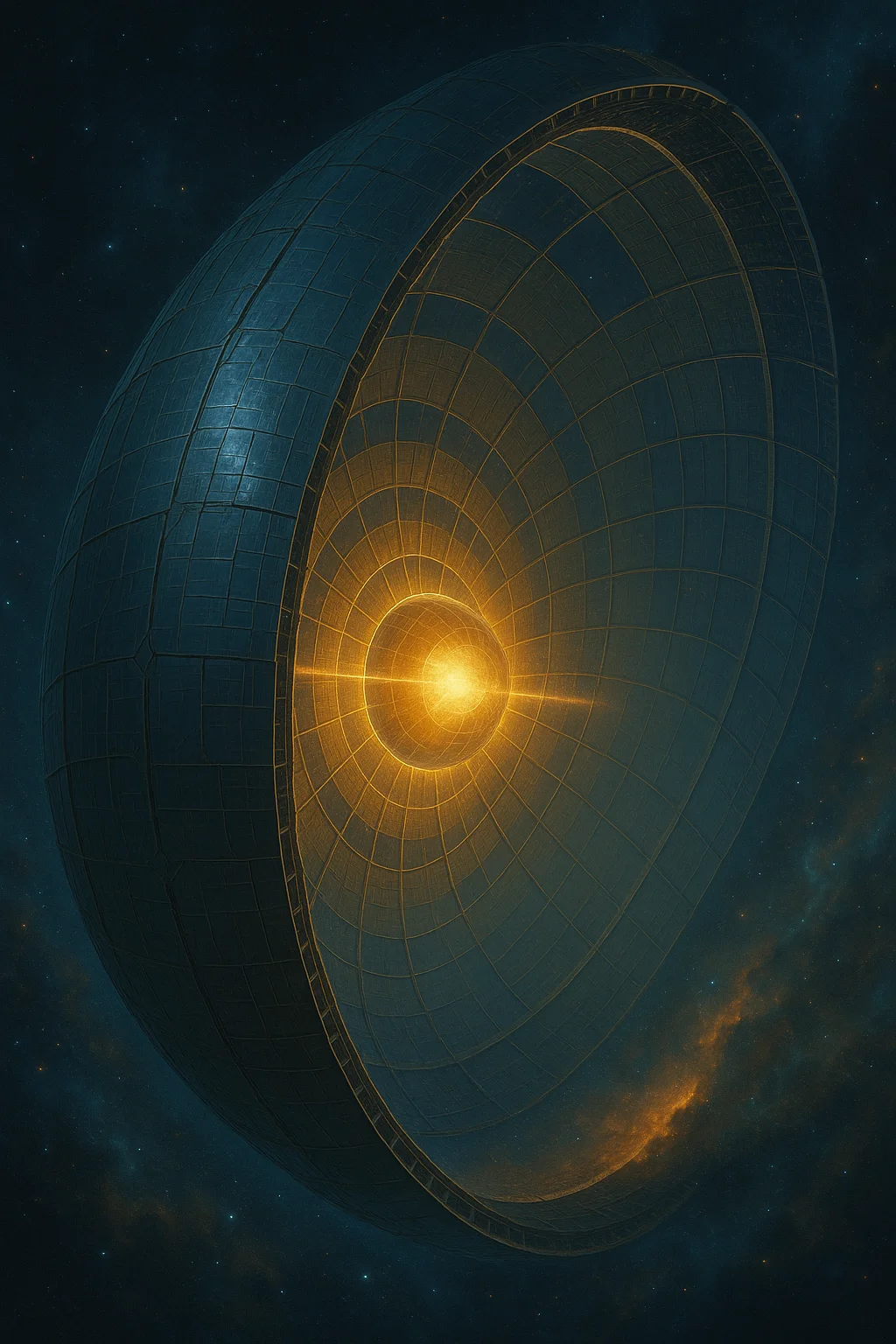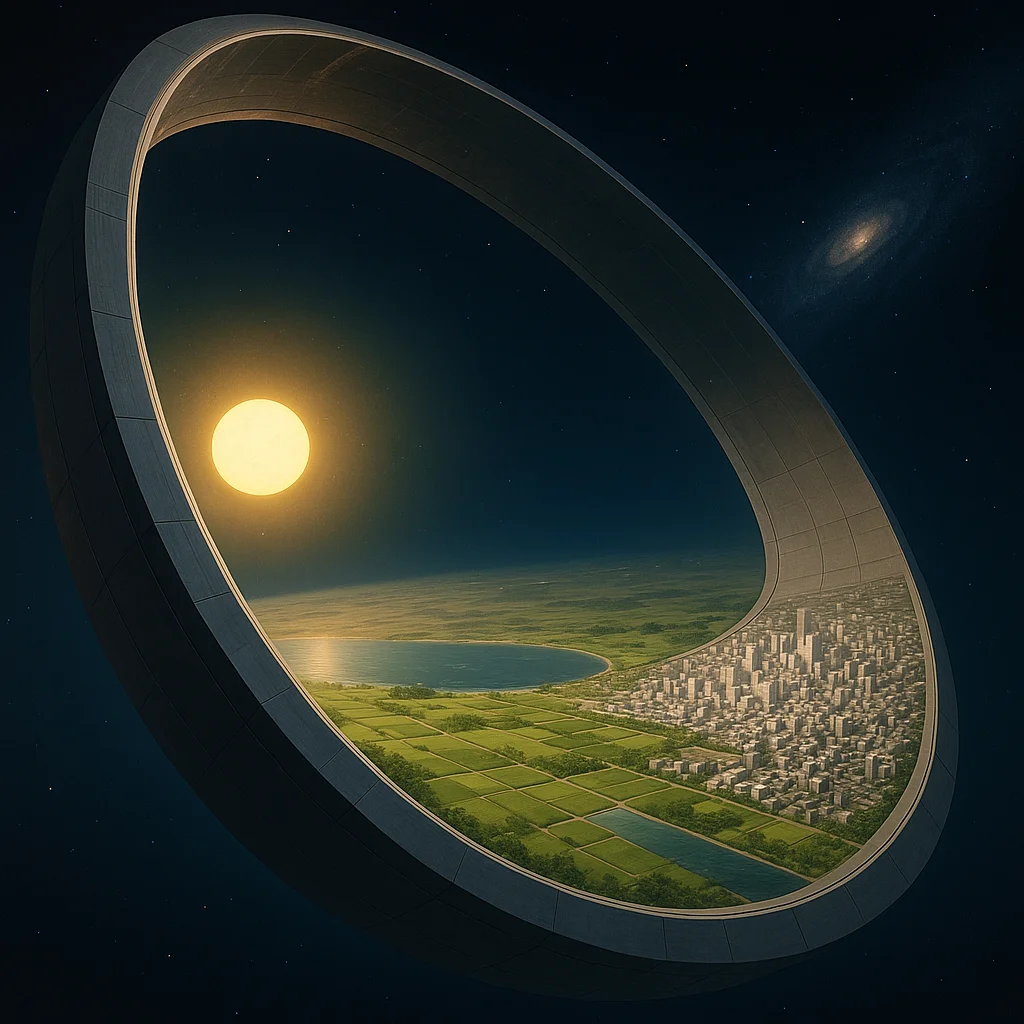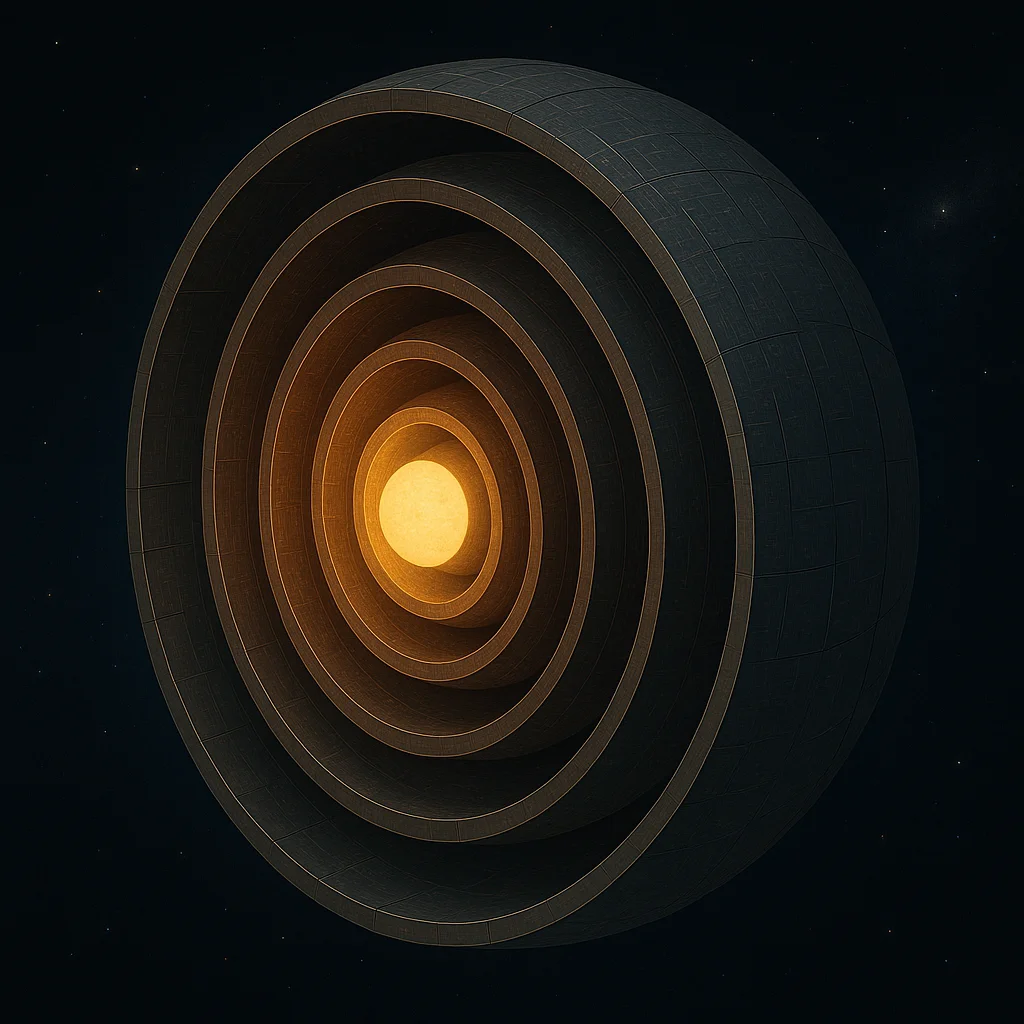What happens when a civilization's ambitions outgrow planets? When the need for living space, energy, and resources demands thinking beyond worlds? The answer lies in megastructures—engineering projects so vast they challenge our conception of what's possible, yet grounded in the laws of physics that govern our universe.

The Scale of Ambition
To understand megastructures, we must first grasp their staggering scale. The International Space Station, humanity's largest space structure, spans 109 meters and weighs 420 tons. A modest O'Neill cylinder would be 32 kilometers long and house millions. A Dyson sphere would encompass an entire star.
These aren't fantasies—they're engineering challenges waiting for civilizations with sufficient resources and motivation. Every calculation shows they're possible. The question isn't if they can be built, but when and why.
Dyson Spheres: Capturing a Star
In 1960, physicist Freeman Dyson proposed that advanced civilizations would eventually harness all their star's energy. The concept has evolved from a solid shell (physically impossible due to gravitational stresses) to more practical variants:
Dyson Swarm
Millions of solar collectors orbiting a star in a dense cloud, each positioned to avoid shadowing others. This approach offers:
- Scalability: Start small, add collectors over centuries
- Flexibility: Individual units can be maintained or replaced
- Efficiency: Capture up to 100% of stellar output
- Materials: Could be built by dismantling a single planet
Dyson Bubble
Stationary collectors held in place by light pressure from the star itself. These "statites" would use vast solar sails to maintain position without orbiting, creating a more uniform energy collection system.
Stellar Engine
A partial Dyson sphere designed not just to collect energy but to move the entire star system. By directing stellar output asymmetrically, civilizations could migrate their home star over millions of years.
"A civilization's energy consumption is the fundamental measure of its technological advancement. Kardashev Type II civilizations harness their entire star—and that requires megastructures." — Nikolai Kardashev, Soviet Astronomer
Ringworlds: A Band of Earth
Larry Niven's Ringworld captured imaginations: a ribbon of solid matter circling a star at Earth's orbital distance, with a surface area millions of times greater than our planet. While Niven's original design had stability issues, modified versions could work:
The Classic Ringworld
- Radius: 1 AU (150 million km)
- Width: 1 million km or more
- Surface Area: 3 million times Earth's
- Spin: Provides artificial gravity through centripetal force
- Walls: 1,000-km high edges to retain atmosphere
Orbital Ring Systems
More modest but still massive: rings around planets rather than stars. These could:
- Provide space elevators at any latitude
- Support hanging cities in the upper atmosphere
- Generate planet-wide transportation networks
- Serve as launch platforms for interplanetary travel

Space Habitats: Worlds We Build
O'Neill Cylinders
Proposed by Gerard K. O'Neill in 1976, these rotating cylinders would provide Earth-like gravity through spin:
- Dimensions: 32 km long, 6.5 km diameter
- Population: Up to 20 million people
- Gravity: Full Earth gravity at the rim
- Atmosphere: Earth-normal, retained by spin
- Day/Night: Mirrors direct sunlight, adjustable for any cycle
Stanford Torus
A wheel-shaped habitat 1.8 km in diameter, housing 10,000 people in suburban comfort. The design includes:
- Radiation shielding from lunar regolith
- Agricultural areas for food self-sufficiency
- Industrial facilities in zero-G hub
- Backup systems for all critical functions
Bishop Rings
Using carbon nanotubes, these structures could be far larger than O'Neill cylinders:
- Diameter: 2,000 km
- Surface Area: Comparable to India
- Population Capacity: Billions
- Unique Feature: Large enough for weather systems
Shkadov Thrusters: Moving Stars
Perhaps the most audacious megastructure: a stellar engine that moves entire star systems. A massive mirror placed near a star reflects radiation in one direction, creating thrust:
- Speed: 50 km/s after one million years
- Distance: 0.03 light-years per million years
- Purpose: Escape supernovae, stellar collisions, or galaxy mergers
- Side Effect: The ultimate "Not In My Backyard" solution
Alderson Disks: Ultimate Living Space
A disk with a star at its center, millions of kilometers in radius with millions of times Earth's surface area. The engineering challenges are immense:
- Gravity varies with distance from center
- Day/night cycles require artificial means
- Material strength beyond current technology
- But provides living space for trillions
Matrioshka Brains: Computing Megastructures
Named after Russian nesting dolls, these are nested Dyson spheres optimized for computation rather than habitation:
Structure
- Inner Shell: High-temperature processors using stellar energy directly
- Middle Shells: Progressively cooler, using waste heat from inner layers
- Outer Shell: Ultra-cold processors for maximum efficiency
- Total Power: 10²⁶ watts dedicated to computation
Capabilities
A Matrioshka brain could:
- Simulate billions of human minds in perfect detail
- Model entire universes at quantum resolution
- Solve currently impossible mathematical problems
- Host digital civilizations of unimaginable complexity

Construction Challenges
Materials
Building megastructures requires materials far beyond current technology:
- Carbon Nanotubes: For tensile strength in rotating habitats
- Graphene: For solar collectors and radiators
- Metamaterials: For radiation shielding and thermal management
- Self-Healing Alloys: For long-term structural integrity
Assembly
Construction would likely involve:
- Self-Replicating Robots: Exponential manufacturing capability
- Asteroid Mining: Raw materials without planetary gravity wells
- 3D Printing: In-space manufacturing of components
- Swarm Intelligence: Coordination of millions of construction units
Timescales
Even with advanced technology, megastructures require patience:
- Small Habitat (Stanford Torus): 20-50 years
- O'Neill Cylinder: 50-100 years
- Dyson Swarm (partial): 100-1,000 years
- Complete Dyson Sphere: 10,000-100,000 years
Why Build Megastructures?
Living Space
Earth's surface area: 510 million km². A single Bishop Ring: 6 million km². A Dyson sphere at 1 AU: 281 trillion km²—550 million times Earth's surface.
Energy
The Sun outputs 3.8 × 10²⁶ watts. Earth receives only 1.7 × 10¹⁷ watts—one 2.2-billionth of solar output. A Dyson sphere captures it all.
Survival
Megastructures offer ultimate redundancy. A ringworld can survive local disasters that would devastate a planet. A mobile star system can escape cosmic threats.
Evolution
Perhaps megastructures represent a natural stage in the development of intelligent life—the point where civilizations graduate from planetary to stellar scale.
Detection and Search
If other civilizations build megastructures, we might detect them:
Dyson Sphere Signatures
- Infrared Excess: Waste heat from energy use
- Stellar Dimming: Partial obscuration of starlight
- Unusual Spectra: Artificial elements in stellar atmosphere
Projects like SETI and Breakthrough Listen actively search for these technosignatures. Several candidate stars show intriguing properties, though natural explanations remain more likely.
The Path to Megastructures
Near Term (2024-2100)
- Rotating space stations demonstrating artificial gravity
- Large solar power satellites beaming energy to Earth
- Asteroid mining providing space-based materials
- First permanent space habitats (100-1,000 people)
Medium Term (2100-2500)
- O'Neill cylinders at Earth-Moon Lagrange points
- Orbital rings around Earth enabling cheap space access
- Self-replicating robotic miners in asteroid belt
- Population in space exceeds 1 million
Long Term (2500+)
- Bishop Rings housing billions
- Partial Dyson swarms for energy collection
- Shkadov thrusters for stellar repositioning
- Humanity becomes a true spacefaring civilization
The Ultimate Expression
Megastructures represent more than engineering achievements—they're statements of intent. A species that builds a Dyson sphere declares its permanence in the universe. A civilization that constructs ringworlds has chosen to create rather than simply inhabit.
These structures challenge us to think beyond the constraints of planetary life. They ask: What could humanity become with unlimited energy and space? How would our culture, philosophy, and dreams evolve when scarcity becomes meaningless and the only limits are imagination and the laws of physics?
Today, megastructures remain in the realm of theory and fiction. But every space station we build, every asteroid we mine, every advance in materials science brings them closer to reality. They wait in our future—monuments to ambition, testimonies to what intelligence can achieve given time and will.
The universe is vast and full of wonders. But perhaps the greatest wonders will be those we build ourselves, when humanity's children dance in structures that dwarf worlds, powered by captive stars, reaching toward a destiny written in steel and light across the cosmos.